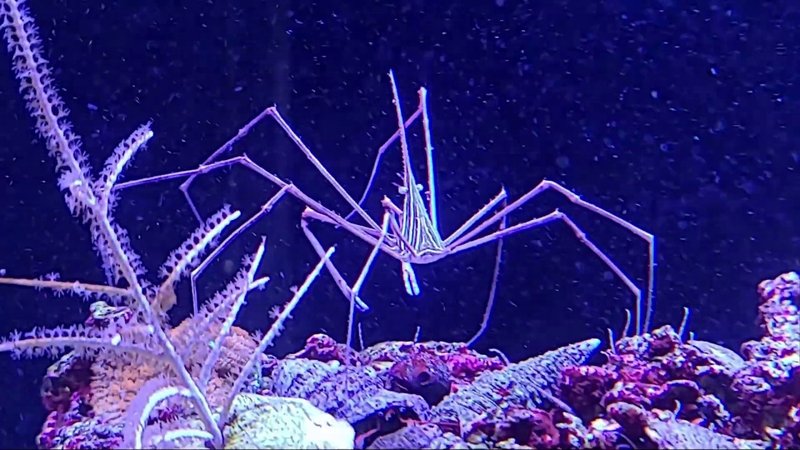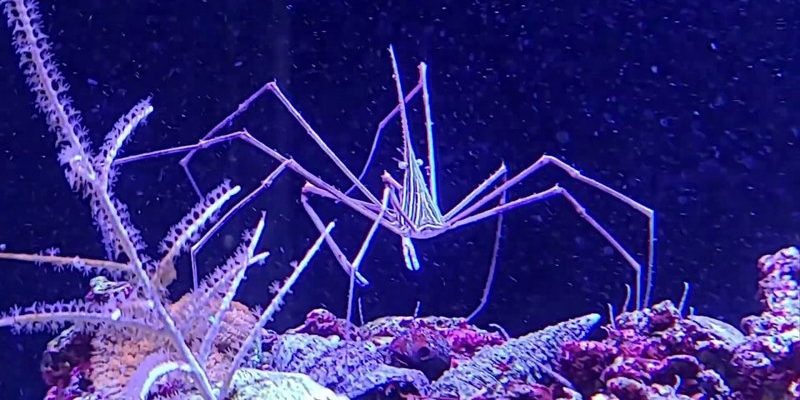
Think of it like choosing a tool for a project. You wouldn’t grab a hammer for a job that requires a screwdriver, right? The same goes for adding arrow crabs. While they can be effective, there are some important factors to consider. Let’s dive into whether adding arrow crabs will help you tackle bristle worm control or if it’s best to steer clear.
What Are Arrow Crabs?
Before we get into the nitty-gritty, it’s essential to understand what arrow crabs are. These unique crustaceans belong to the family **Xanthidae** and usually sport a long, slender body with long legs that give them an arrow-like appearance—hence the name. Arrow crabs are typically found in the Caribbean and along the Atlantic coast. They thrive in reef environments, making them popular choices for saltwater aquarium enthusiasts.
You might be thinking, “What do they eat?” Well, arrow crabs are opportunistic feeders. They happily munch on algae and small invertebrates, including bristle worms, which can make them a potential ally in your tank maintenance battle. However, they’re not picky eaters and could turn their attention to other tank mates if there aren’t enough worms to satisfy their appetite.
How Do Arrow Crabs Help with Bristle Worm Control?
So, how exactly do arrow crabs contribute to controlling bristle worms? The answer lies in their natural feeding behavior. Arrow crabs are known to actively hunt and feed on bristle worms, especially when the worms come out at night. This nocturnal feeding can significantly reduce the worm population in your tank over time.
However, here’s the thing: their effectiveness largely depends on the size and number of bristle worms present. If the worm population is too high or if your arrow crabs are young and small, they may struggle to keep up. You want to make sure you’re setting them up for success!
Additionally, introducing arrow crabs can create a more balanced ecosystem in your aquarium. They can help control not only bristle worms but also other unwanted pests, contributing to a healthier environment for your fish and corals.
Potential Downsides of Arrow Crabs
It’s not all sunshine and rainbows when it comes to adding arrow crabs. While they can offer some benefits, there are potential downsides to consider. One concern is their territorial nature. As they get comfortable in your aquarium, arrow crabs can become aggressive towards other tank mates, particularly smaller fish or invertebrates. This behavior could lead to stress or even injuries in your community tank.
You might also wonder about their effectiveness in larger tanks. If your aquarium is spacious and contains plenty of hiding spots, the arrow crabs might not be able to make a significant impact. They could miss out on catching worms hiding in crevices, defeating the purpose of adding them in the first place.
Lastly, if there’s a limited food supply or too many other options, your arrow crabs may not touch the bristle worms at all. It’s essential to ensure they have a balanced diet that doesn’t just rely on the worms.
How to Introduce Arrow Crabs to Your Aquarium
If you decide to go ahead and add arrow crabs, it’s crucial to introduce them properly. Start by **quarantining** your new crabs for a week or two. This step helps ensure they’re healthy and minimizes the risk of introducing any diseases to your main tank.
Once you’re ready to integrate them, gently acclimate them to your tank’s conditions. You can do this by floating the bag in the aquarium for about 15 minutes and gradually mixing some tank water into the bag. This process helps them adjust to the temperature and salinity changes.
As for tank size, a minimum of 30 gallons is typically recommended for arrow crabs. Make sure there are plenty of hiding places—like rocks, caves, and corals—where they can feel secure. The more comfortable they are, the more likely they’ll venture out to search for food, including those pesky bristle worms.
Alternative Solutions for Bristle Worm Control
If you’re not entirely sold on the idea of introducing arrow crabs, don’t despair! There are a few alternative methods to consider for bristle worm control. One popular option is to use **natural predators** like certain types of fish, such as dottybacks or wrasses, which are known to snack on bristle worms.
Another method involves regular **manual removal**. While it may sound tedious, many aquarists swear by this approach. Using a pair of tweezers or even your hands (with gloves!) can help reduce the bristle worm population, especially if you catch them early on.
Lastly, you can also look into using specific types of traps designed for bristle worms. These traps can be placed in your tank and are engineered to lure the worms in, making it easier to catch and remove them without affecting your other tank inhabitants.
Final Thoughts on Adding Arrow Crabs
Adding arrow crabs can be a mixed bag when it comes to controlling bristle worms in your aquarium. They have the potential to help, especially if you provide them with the right environment and a balanced diet. However, their territorial nature and the need for a sufficient bristle worm population can limit their effectiveness.
Ultimately, the best approach might involve combining methods. Perhaps introduce arrow crabs while also considering manual removal or other predator fish. This multi-faceted strategy could help keep those bristle worms in check, ensuring a happy, healthy aquarium for all your aquatic friends. So, will you give arrow crabs a chance? It’s your call!

